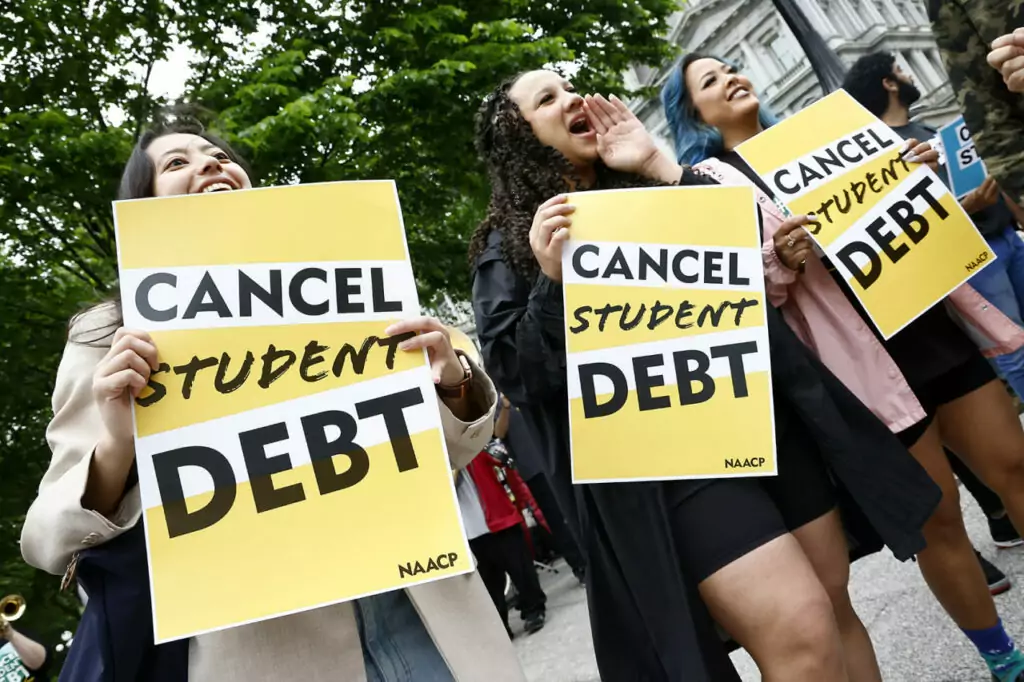A recent Government Accountability Office report highlights significant fraud risks in the U.S. Education Department’s student loan forgiveness initiatives, raising concerns about the efficacy of future relief programs.

✅ AI Essay Writer ✅ AI Detector ✅ Plagchecker ✅ Paraphraser
✅ Summarizer ✅ Citation Generator
Key Takeaways:
- The Education Department’s student loan forgiveness plan lacked adequate fraud prevention measures, as identified by the GAO.
- The U.S. Supreme Court struck down the initial loan forgiveness proposal, prompting the search for alternative relief methods.
- The reliance on self-reported data in the original plan raised concerns about the program’s vulnerability to fraudulent claims.
- The GAO advises robust evaluations of fraud risk and comprehensive management plans for future loan forgiveness programs.
- The Education Department faces the challenge of providing timely relief while ensuring adequate fraud protection.
The U.S. Department of Education‘s ambitious student loan forgiveness plan, aiming to alleviate the financial burden for millions of Americans, has come under scrutiny. The Government Accountability Office (GAO) recently revealed that the department’s approach to loan forgiveness lacked adequate fraud prevention measures. This revelation comes in the wake of the U.S. Supreme Court’s decision to strike down the sweeping loan forgiveness proposal. The situation underscores the urgent need for robust fraud risk assessment and management in future debt relief initiatives.
Education Department’s Forgiveness Plan
The GAO’s report sheds light on the Education Department’s handling of the student loan forgiveness plan, revealing a significant oversight in fraud risk management. The department approved loan forgiveness for 14 million borrowers without employing proper safeguards against potential fraud. This move was based on an assessment that the program was at relatively low risk for fraud, a presumption the GAO found questionable considering the vast scale of the proposed relief—estimated at $430 billion for over 31 million borrowers.
The Education Department’s approach to borrower approval, which heavily relied on self-reported data, has been criticized for its potential vulnerability to fraudulent claims.
Education did not deploy any tools to verify these borrowers’ incomes or ensure they were eligible for relief.
Legal Challenges
The loan forgiveness plan, part of President Joe Biden’s broader educational policy, faced numerous legal challenges, culminating in the Supreme Court’s decision to declare the plan unlawful. This ruling prevented the actualization of the program, but it has not deterred the Education Department from seeking alternative methods for mass debt relief.
One such method involves enacting loan cancellation through a regulatory process known as negotiated rulemaking. This process is notably slower, potentially taking over a year, but it could provide the department with the necessary time to incorporate GAO’s findings and strengthen their fraud risk management.
Under the original plan, the department set two methods for determining borrower eligibility: an application process for most and an automatic process for those who had recently reported their income. Over 12 million borrowers were approved using these applications, but as the GAO report indicates, “without evaluating the accuracy and outcomes of its application process.”

Additionally, over 2 million borrowers were set to be automatically approved based solely on self-reported income data. This approach, as GAO and the Education Department had previously identified, was prone to issues of underreporting income, yet no steps were taken to verify these incomes before approval.
The GAO report does not just critique past actions but also offers guidance for future loan forgiveness efforts. It recommends the Education Department to incorporate robust evaluations of fraud risk management activities and enact all stages of the department’s fraud risk management plans before approving any borrowers for relief. These recommendations aim to ensure that future programs are more secure and less susceptible to fraud.
However, the Education Department has only partially agreed with these recommendations. It considers the suggestion to crosscheck approved borrowers’ incomes as unnecessarily burdensome and argues that not every stage of its fraud risk management plans needs to be in place before borrowers start receiving forgiveness.
The dialogue between the GAO and the Education Department reflects the complexities involved in implementing large-scale loan forgiveness programs. While the department aims to provide relief to borrowers swiftly, it must balance this goal with the need to safeguard against fraud, a task that is all the more crucial given the substantial financial implications of such programs.
The GAO’s report on the U.S. Education Department’s student loan forgiveness plan reveals significant gaps in fraud risk management, highlighting the need for more stringent measures in future debt relief initiatives. As the department explores alternative means of providing relief, the lessons learned from this report could prove pivotal in ensuring that future programs are both effective and secure.
Follow us on Reddit for more insights and updates.





Comments (0)
Welcome to A*Help comments!
We’re all about debate and discussion at A*Help.
We value the diverse opinions of users, so you may find points of view that you don’t agree with. And that’s cool. However, there are certain things we’re not OK with: attempts to manipulate our data in any way, for example, or the posting of discriminative, offensive, hateful, or disparaging material.